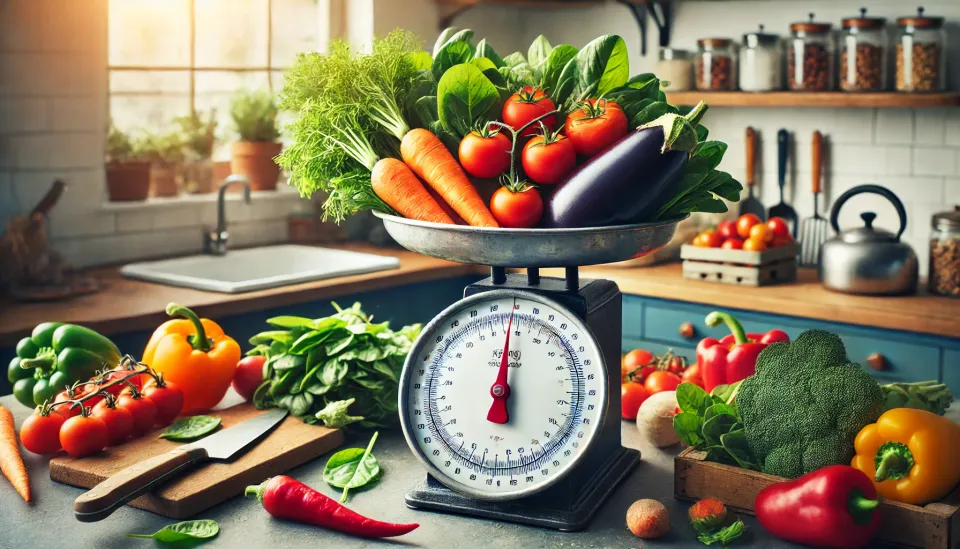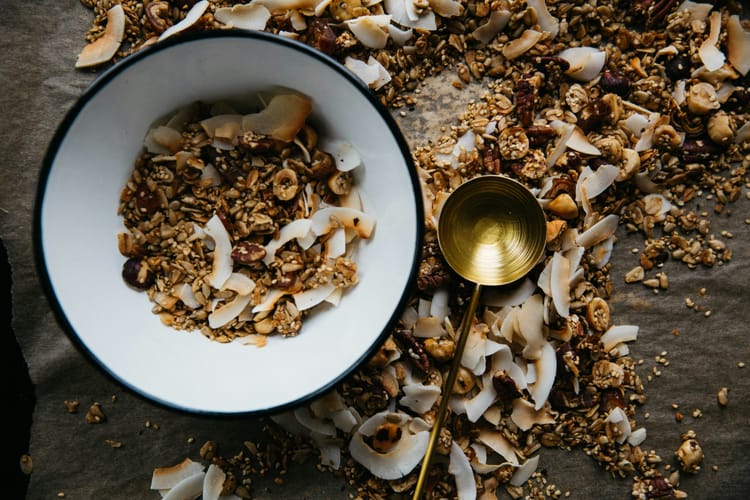Does Calorie Tracking Matter?

One of the first topics that people new to nutrition learn about is calorie tracking. Regardless of if your goal is to lose weight, gain weight, increase muscle mass, or maintain your status quo, most resources will point you to calorie tracking. At first it seems easy, but then you encounter food with weird sizes, you eat out with food that's impossible to estimate, you miss a day, and eventually you find yourself doubting if calorie tracking is worth it. It can be incredibly tedious after all! Let's examine why calorie tracking is useful, what goes into calorie/consumption tracking, the challenges with diligent tracking, and how to create lasting change.
Why track calories?
Calorie tracking is used to either change or maintain weight. At the end of the day, your weight changes are driven by the amount of calories ingested minus calories used through exercise and regular body functions.
The real benefits from tracking calories come from everything around the actual numbers. As we'll show next, its mostly about being directionally correct in terms of the calorie and consumption numbers you use.
Calorie tracking gives you insight into your trends and food habits. Most people know that some foods are better than others, but very rarely to the degree. Tracking your meals enables you to understand how much of a daily value is consumed by a specific choice, which foods have more nutritional value vs less, and how to more easily substitute a less healthy option for a better one. It also increases accountability because you can see your choices and their impacts in the day clearly summarized.
Calorie & Consumption Calculation
When estimating the amount of calories needed to change weight, the general idea is more calories above what you use in a day will lead to a higher weight and consuming less calories in a day than you're using will result in a lower weight. The common expression Calories in - Calories out holds true! Tracking your meals gives you a good estimate of calories in (when you prepare them). Calories out is a bit more complex. Let's explore the different components at a high level.
The Basal metabolic rate is effectively how many calories your body would burn if it did absolutely nothing all day. It's the "keeping the lights on" needs of your body. The brain, liver, heart, and kidneys are the primary drivers of the BMR. Surprisingly, your body uses a good chunk of your daily calorie consumption just by operating as usual.
Our estimations of a person's BMR are far from perfect, the scientific community has developed tons of different equations for estimating your BMR with new ones being released all the time. Ultimately, these equations use some kind of baseline which was derived from the population they sampled. If your characteristics (age, weight, % body fat, etc.) are standard deviations away from the study's population then the equation will misrepresent your true BMR. One popular way to manage this error is by taking a few of the most accurate equations that have proven to be useful for most people and averaging them. You'll have a more middle ground estimate, at the cost of some accuracy.
1. Oxford-Henry
2. 1991 Cunningham
3. Harris-Benedict
4. Mifflin-St. Jeor
Note: There are many other factors that may influence your BMR such as weather, diet, supplements, pregnancy, and more.
Once we have a BMR number, the next step for calculating your calories out is to determine how many calories you burn throughout the day. The combination of activity caloric expenditure and BMR is known as your Total Daily Energy Expenditure (TDEE).
The common approach for estimating TDEE is to first calculate BMR and then apply a multiplier for activity level.
Sedentary (1.2x) - Office job
Lightly Active (1.375x) - Exercise 1-2 days/wk
Moderate (1.55x) - Exercise 3-5 days/wk
Very Active (1.725x) - Exercise 6-7 days/wk
Extra Active (1.9x) - Exercise all day, labor intensive job
Professional Athlete (2.2x) - Athlete, professional resources
You can change the inputs below to see the impact of different settings and how it affects your TDEE estimate.
Total Daily Energy Expenditure Calculator
BMR Estimates
| Oxford Henry | 1991 Cunningham | 1984 Harris-Benedict | Miffin-St. Jeor | Averaged |
|---|---|---|---|---|
Total Daily Energy Expenditure (TDEE)
Calories:Note: Variations on inputs can affect your estimates.
Challenges with tracking
Real world calorie tracking can be challenging. If you are measuring each of your foods and prepare everything from scratch its doable, but you're most likely in a lab environment.
The truth is people are bad at estimating. Numerous studies have shown that people underestimate calories consumed and overestimate calories burned. (1) Some studies have estimated the intake number to be less than half the true value!
Even with tracking every ingredient and weighing all your meals, the food labels themselves don't show the full picture. The FDA allows food manufacturers a 20% margin of error on their labels. Making a 100 calorie snack somewhere between 80-120 calories.
Most people will also occasionally eat out, whether for convenience or a special occasion. The challenge with estimating restaurant meals if you have no control over which ingredients or the portion sizes. Most restaurants will use less healthy ingredients such as oils and sugars to boost the taste profile. When examining portion sizes over the last 20 years, restaurants today serve sizes that are 2x or 3x larger. This increase in quantity of food further normalizes big portion sizes that are likely less nutrient dense than in the past. (2)
Habits of change
Looking back at our calculator, depending on inputs and activity selection, your TDEE can range 600+ calories a day. When you add the impact of label inaccuracy and the challenges of eating out you could very well have a variance of almost 50% your daily intake. So how are you to plan for what you should consume?
Our mentality is that we want you to be successful for the long term, and not focus on an individual daily number that could be 1400/1700/2500. The most important piece is to be diligent about what you eat, and to track your progress.
By understanding your inputs and weight changes over multiple weeks, you'll be able to identify if your making progress or not. Then the choice is easy to increase or decrease your daily caloric goals.
Most tracking apps allow you to scan barcodes of ingredients which is a huge timesaver vs manual entry. The wearable fitness trackers are also good for understanding level of activity changes over multiple weeks.
Once you have a good idea on where most of your daily calories are being spent, it comes down to substitutions and portion control. We are by no means suggesting cutting anything cold turkey. That only results in falling off the plan in a few weeks. Substituting the lighter food option in place of a more calorie dense option can reduce your intake with limited change.
Focusing on higher quality foods is key to changing your appetite. An avocado is a higher calorie option, but it includes a ton of great nutrients. In comparison to a soda which may have similar calories but limited nutritional value. By choosing better quality food in place of high calorie food, you can ensure you're getting the optimal value per calorie.
It really is a marathon not a sprint. Tracking is a great way to understand the impact of foods on your daily calorie intake and to learn where you can substitute easily. Real long term progress comes from behavior changes and finding a plan that works for you.



